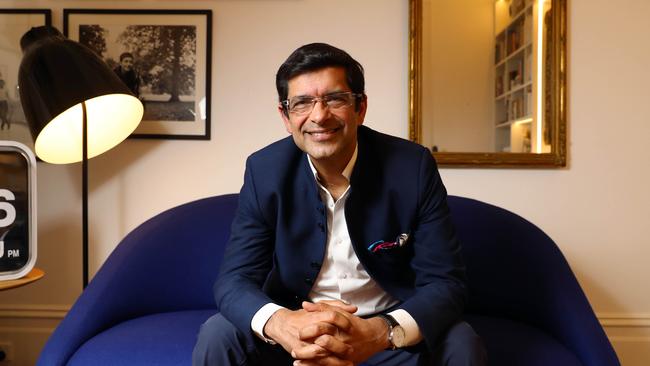Universities need a research funding model to match their ambition

This makes us the world’s third biggest “university power” — behind the US and Britain but ahead of China, Japan and Germany. It is this remarkable performance that draws students and scholars from all over the world. I am one of them, having come to the University of Melbourne from London.
Nonetheless, our university sector is facing unprecedented challenges. But let’s not panic. The ability of Australian universities to provide good-enough teaching is not under threat. What is at stake is whether we can deliver the world-class mix of research and teaching as we do now.
Research funding in Australia has always been precarious. Universities provide their professors a salary to teach and an allowance of time to research, but they do not provide funds for their labs, their workshops and their assistants. Professors raise these funds through grant competitions — often with success rates of below 10 per cent. It is these research grants that allow Sharon Lewin’s team at Melbourne University to isolate the COVID-19 virus; Tom Snelling’s team at the University of Sydney to predict COVID-19 cases; and Paul Young’s team at the University of Queensland to produce a unique vaccine candidate for COVID-19.
The elephant in the room is that these grants do not cover the full cost of research. They only cover the variable costs of the test-tubes, the chemicals and the research assistants on a particular project. They do not pay for the infrastructure: the laboratory buildings, the equipment, the libraries and computers. In simple business terms, research grants pay for the variable cost of research, leaving universities to pick up the fixed costs — about 40c to 60c for every dollar of the research grant. Thus, the better a professor is at winning research grants, the deeper it digs the university into a financial hole.
How have the Australian universities managed so far? A substantial amount of support for this has come from international student fees. As that tide has ebbed, this risk is exposed.
To add to that, the recent “Jobs Ready” reforms will take a further 6 per cent of domestic funding for universities by way of student fees. The precarious system that supported our university research for two decades has unravelled in three months.
The US funds the full cost of research at the level of each individual grant. This means an additional 52c comes in addition to each dollar of the grant. Britain does the same, just a little less generously.
China has become a formidable research power in just two decades by giving a few chosen universities special block grants in addition to their professors competing in national competitions. This has allowed these universities to differentiate and develop world-class excellence in particular areas.
Germany funds university-associated research centres in particular disciplines where it picks up all the cost of research. But none of them leaves research prowess at the mercy of student fees.
Australia did not choose to create world-leading universities. It was a fortuitous confluence of the ambition of the individual universities, the excellence of their scholars, a surfeit of international students and our attractiveness as a destination that created this powerhouse.
That model just evaporated. The elephant in the room is now sitting on our sofa, demanding a new system.
We have three choices.
One is for the government to fund the full cost of research, as in the US. This would require little change to the system but is costly, perhaps in the range of $1bn. That may be a hard to find in these times.
Alternatively, the government may choose to pay for the full cost of research but within the present funding envelope. With this, about a quarter of the research may be lost. This would be an unacceptable loss of talent and reputation for a leading scientific nation.
We need a middle way — less costly than the first, more effective than the second, aligned with Australia’s future. This might take the form of targeted support for mission-based team science.
Immediately after World War II, the Australian National University was founded in Canberra with a special National Institutes Grant “to give the nation a world-class capacity in areas … important for the nation’s future”. Perhaps it is time to find the same zeal and ambition again.
Australia could provide its universities with nationally funded mandates for developing and maintaining world-leading excellence in areas critical to our future.
Such long-term mandates must be based on academic excellence, fire-walled from political manipulation, and contestable in periodic renewals. They will come with the expectation of training the next generation, working with Australian industry and connecting with all Australians to show how their investment in university research is preparing this nation for its future.
Having world-class research universities is not a requirement, it is a choice. It is a choice based on our ambition for our future generations and for our role in the knowledge economy. It is a choice we cannot leave for the universities alone to make. It’s a choice we need to make as a nation.
Shitij Kapur is dean of the medicine, dentistry and health sciences faculty and the assistant vice-chancellor for health at the University of Melbourne, and a board member of Research Australia. These views are his own.



Australian universities are in an envious position. Seven of them are ranked in the top 100 in the world. By comparison, only one or two of our major companies ranks in the top 100.